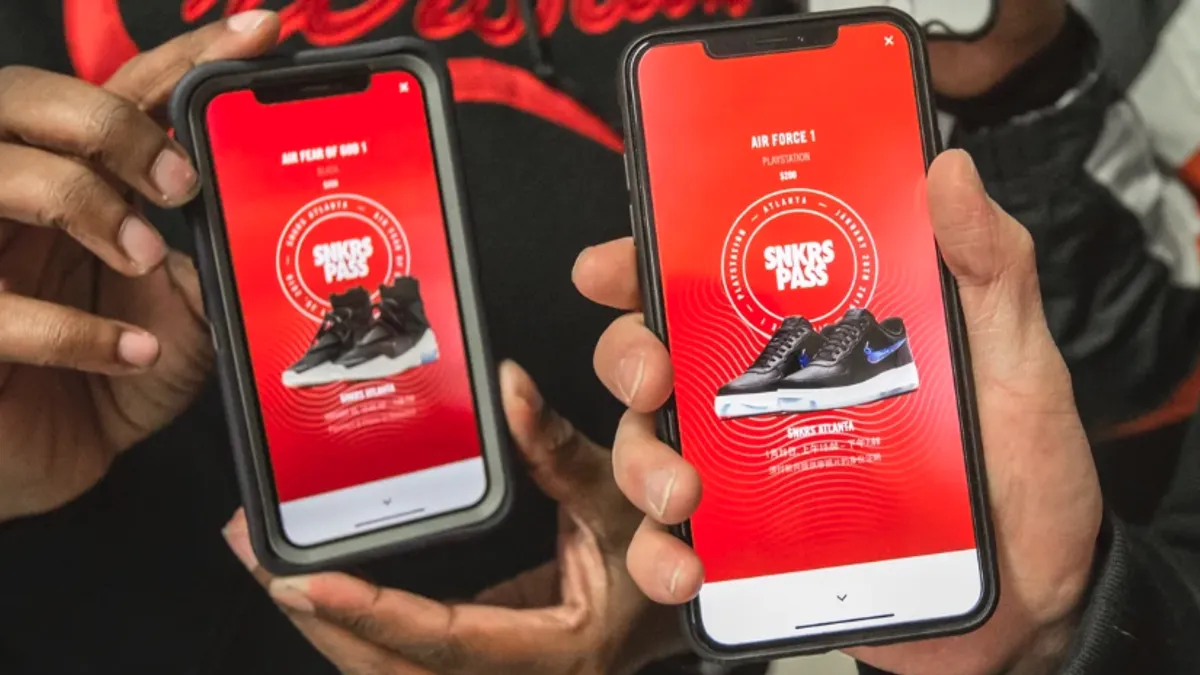Dive Brief:
- Nike's new U.S. fulfillment center in Los Angeles ramped up in time to reduce fulfillment cost per piece on West Coast shipments for the holidays, executives said on an earnings call last week.
- Just after the Los Angeles "regional service center" opened, Chief Financial Officer Matt Friend said the fulfillment cost reduction would develop over time. One quarter later, "we already see return on our investments in North America, where we ramped up our new regional service center in Los Angeles to serve peak holiday demand, aided by capabilities from our Celect acquisition," Friend said Friday. Nike's digital sales in North America doubled in the quarter that ended Nov. 30.
- Nike is also increasingly introducing robots into its fulfillment operations. "Robots played a huge role," said CEO John Donahoe, referring to upping total fulfillment capacity. "Over 1 million boxes shipped by robots and the productivity that comes with that." Executives did not specify what kind of robots they have employed.
Dive Insight:
Building fulfillment capacity has been at the center of Nike's supply chain strategy in 2020 as the company attempts to move away from wholesale distribution and toward direct sales to consumers. By June, the sportswear brand had tripled its global fulfillment capacity, with an eye toward omnichannel operations in the U.S.
Nike's 2019 Celect acquisition helps to determine what merchandise should stock Nike's warehouses, which in turn cuts down on fulfillment cost. Friend indicated more investment in supply chain technology and inventory management may be on the way to help Nike predict where to position inventory.
"The benefits for us in that are in gross margin. It's more full-price realization. It's lower cost to fulfill. And frankly, it's better for the environment because it's less shipping and it's less moving stuff around," Friend said.
Omnichannel services like buy online, pickup in-store, curbside pickup, ship from store and ship to store are much tougher to leverage for fulfillment cost reduction purposes for a single brand like Nike, explained Friend.
"While we don’t have the largest store footprint today ... relative to maybe pure vertical retailers, we are investing in stores with the intentionality of having stores in more places," he said.
Nike is planning 30 new stores in the next six months, in part to increase Nike's geographical footprint to improve omnichannel fulfillment performance and efficiency.













